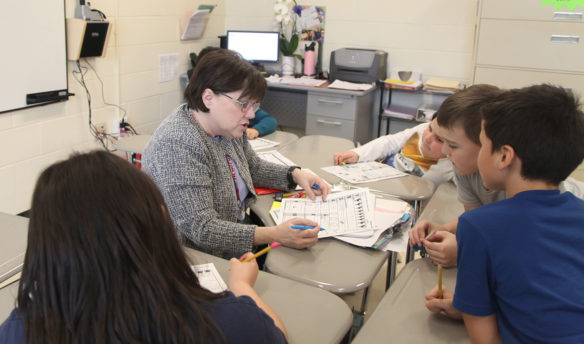
Patti Farley, a Title I interventionist at Spottsville Elementary School, works with a group of students during a Tier II intervention. Every student at the school receives either Tier II or Tier III interventions based on formative assessments.
Photo by Megan Gross, March 20, 2019
- Seven teachers who retired from the school serve as part-time interventionists.
- Communication between the interventionists and classroom teachers has been a key.
By Mike Marsee
mike.marsee@education.ky.gov
Diane Parker retired in 2009 after 37 years at Spottsville Elementary School – and then she came back.
Parker is part of a group of seven teachers who retired from the Henderson County school and have returned to work as part-time interventionists. They are part of the success story that has made Spottsville Elementary one of five public schools in Kentucky recognized as a 2018 National Blue Ribbon School by the U.S. Department of Education.
Their work is part of an effort by the school’s leadership to provide a little extra help for every student – not just the struggling ones – in mathematics and reading. Parker said she saw that as a worthwhile effort and a way of continuing to help her school.
Beginning with the 2017-2018 school year, all Spottsville students received Tier II interventions based on formative assessments, and all students scoring below the 30th percentile received Tier III interventions, although they have avoided using the “I” word.
“We don’t really use that word with them,” Parker said. “They just go to class.”
Principal Sarah Estabrook said changes to the way the school administered Tier II and Tier III interventions resulted from an examination of its professional learning community process.
“We found that even our gifted students still had areas of weakness. So every couple of weeks in our small groups for Tier II we’re looking at data and changing those groups to meet the needs of all kids,” Estabrook said. “It’s actually intervention/acceleration.”
Interventions take place on a daily basis with small groups of students, and Estabrook said the makeup of the groups changes throughout the school year.
“What we’ve heard from our parents was that you always knew who ‘those kids’ were, and now all kids are getting pulled, so it didn’t feel like we were degrading anyone. That was a huge game-changer for us,” she said.
“Some of our higher achieving students, their parents questioned us: ‘What do you mean my kid’s in intervention?’ All kids are getting this and we’re working on what your child needs. It did take a little bit and then the light bulb went off, and it was, ‘You know what, that’s really what’s best for the culture of the school.’”
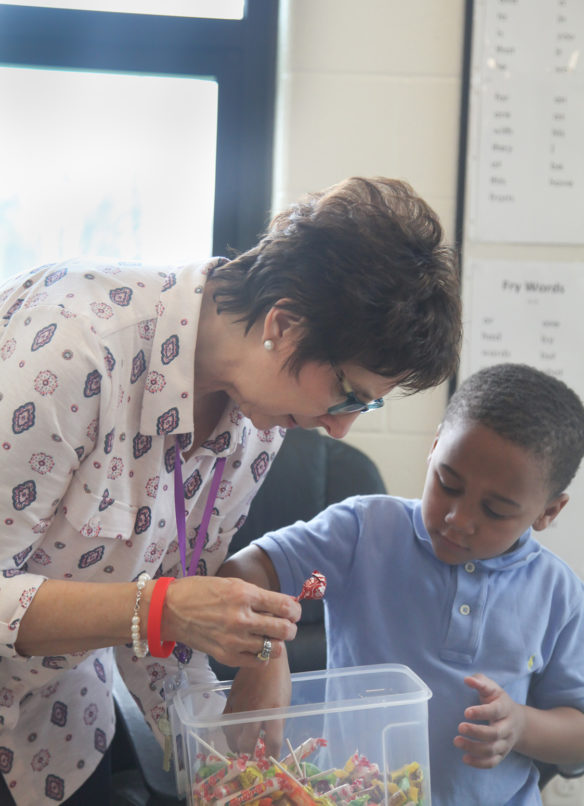
Diane Parker, a Title I interventionist at Spottsville Elementary School, lets student Kalaidren Baker select a piece of candy following his intervention session. Parker is one of seven teachers who retired from the school and have returned to work as part-time interventionists.
Photo by Megan Gross, March 20, 2019
The majority of Spottsville Elementary’s Title I funding goes toward paying for the part-time interventionists who work with students during the school day.
“They have so many tools in their toolbox. It’s awesome to know that I can trust them when they are working with a small groups of kids, that those kids are working with experienced teachers,” Estabrook said. You can’t ask for better instruction.”
Parker said communication is a key for the interventionists’ success.
“We talk to each other. We talk about the students and their progress, not only between the interventionists, but also with the classroom teachers. There’s feedback there all the time,” she said.
Tracey Kolb, the school’s Title I liaison, spent 28 years as a special education teacher before retiring, and she has been in her current role for eight years.
“When these teachers were in the classroom they didn’t get to engage as much with the children who needed it,” Kolb said. “To get to do that now gives them a sense that they’re doing something so good.”
Parker said she works with about 35 students a day in groups no larger than seven. Not all students are working with interventionists – some get Tier II interventions through classroom teachers – but all are getting extra instruction.
“We’ve seen great gains,” Kolb said.
Spottsville’s goal when it implemented schoolwide interventions was to continue to increase student growth. Its rate of novice students in reading dropped from 10.0% in 2015-2016 to 4.9% in 2017-2018, and its rate of novice students in mathematics fell from 6.7% to 2.9% over the same time span.
The retired teachers also volunteer at the school’s family nights, such as the literacy night in April that was the first family event in a new building that opened in January.
“They love our kids. I think that’s what it really comes down to,” Estabrook said.
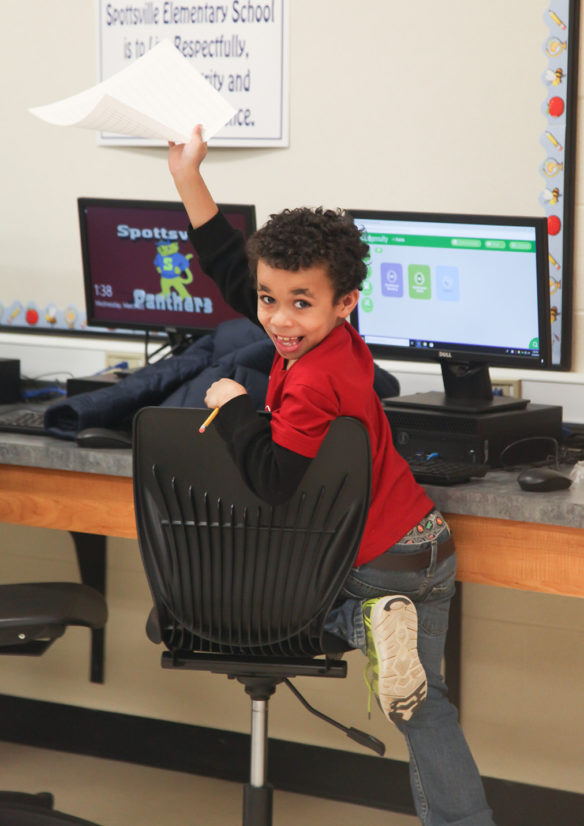
Kalob Frost, a student at Spottsville Elementary School (Henderson County), shows off his work. Spottsville Elementary was recognized as a 2018 National Blue Ribbon School by the U.S. Department of Education.
Photo by Megan Gross, March 20, 2019
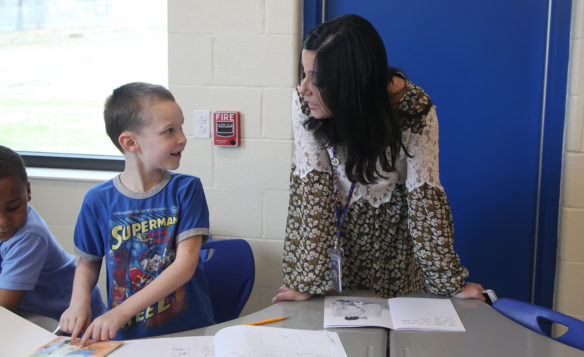
Sarah Estabrook, the principal at Spottsville Elementary School (Henderson County), talks with student Michael Blair.
Photo by Megan Gross, March 20, 2019
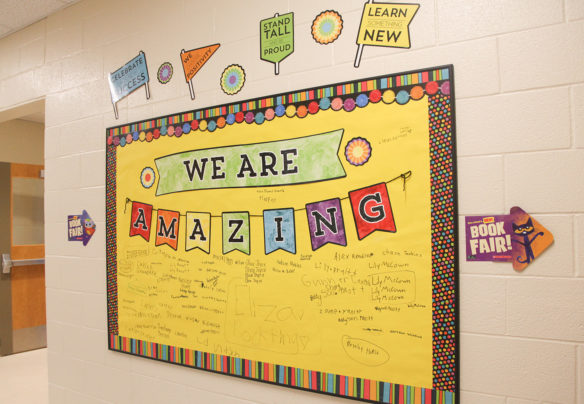
A bulletin board in the hallway at Spottsville Elementary School bears students’ signatures. The school moved into a new building in January.
Photo by Megan Gross, March 20, 2019
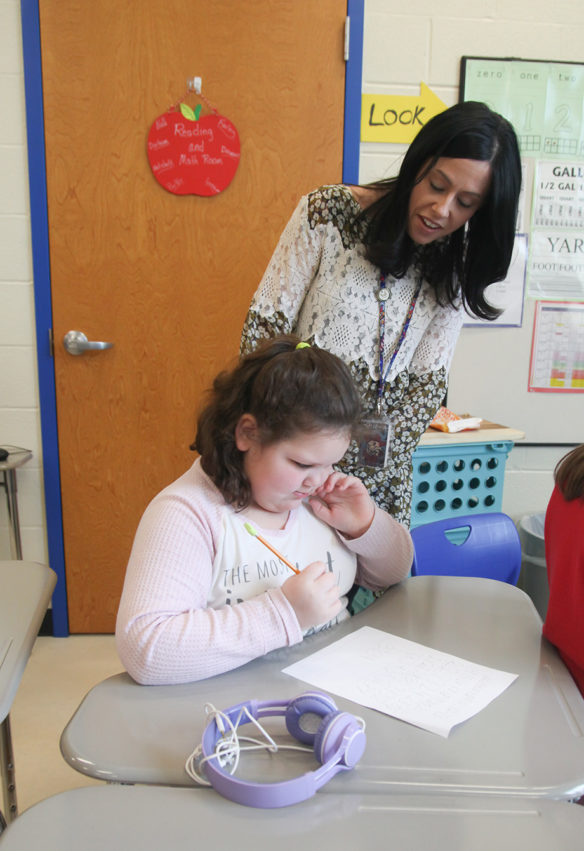
Sarah Estabrook, the principal at Spottsville Elementary School, looks over the work of student Lucy Williams. Estabrook said strong support from the school’s parents has helped the school achieve Blue Ribbon status, and she said that has stemmed from strong relationships between the parents and faculty.
Photo by Megan Gross, March 20, 2019


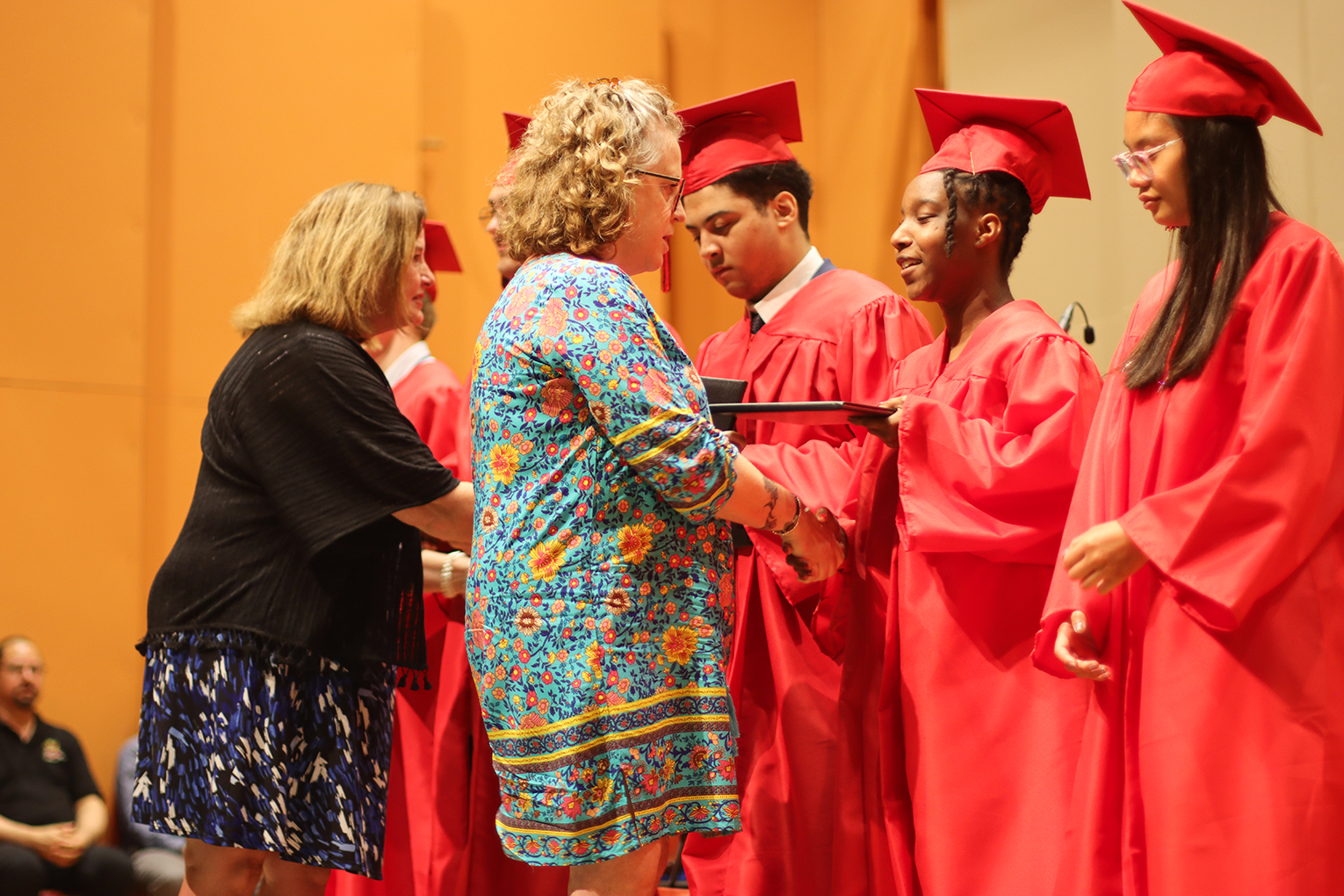

Leave A Comment